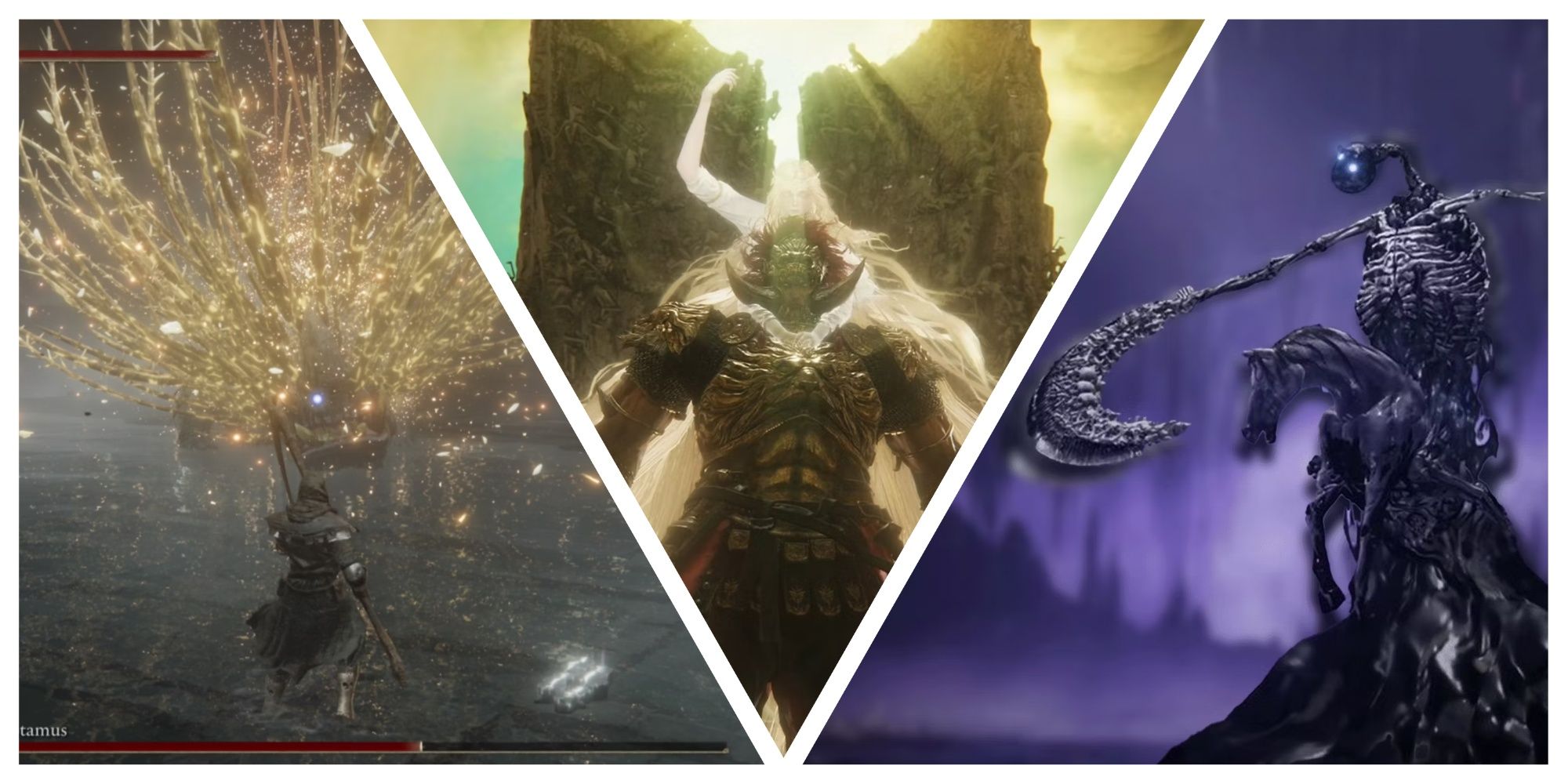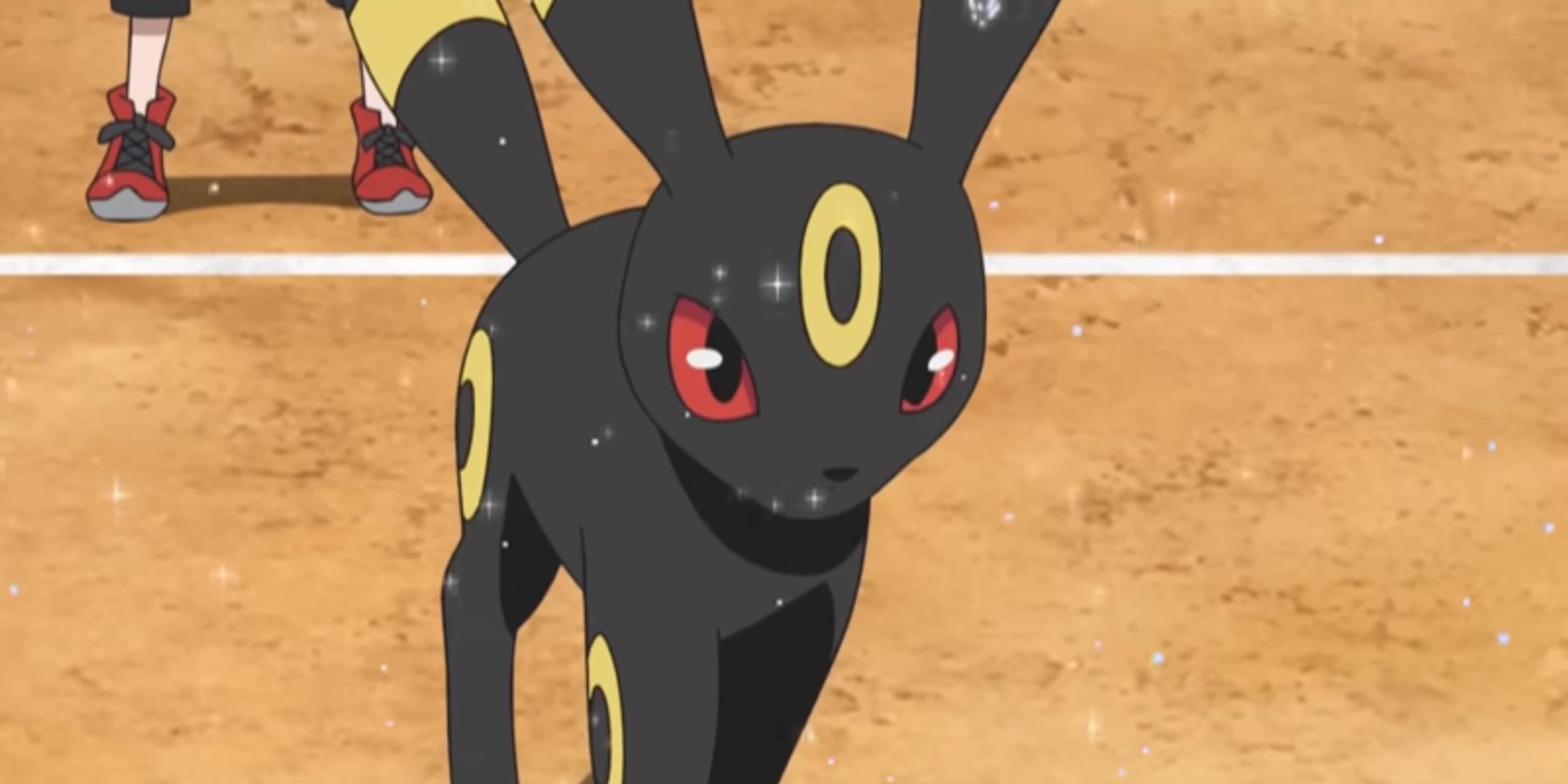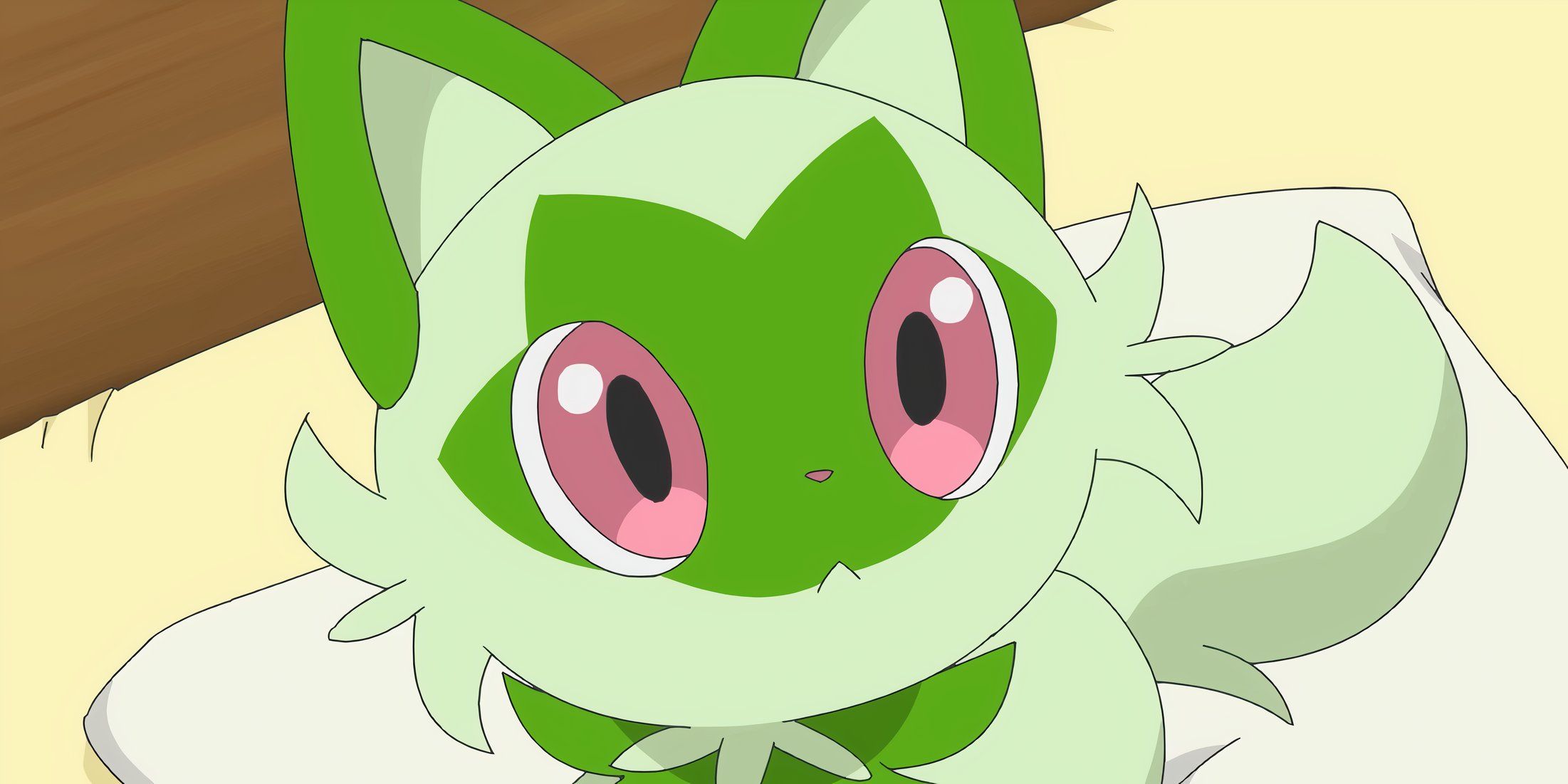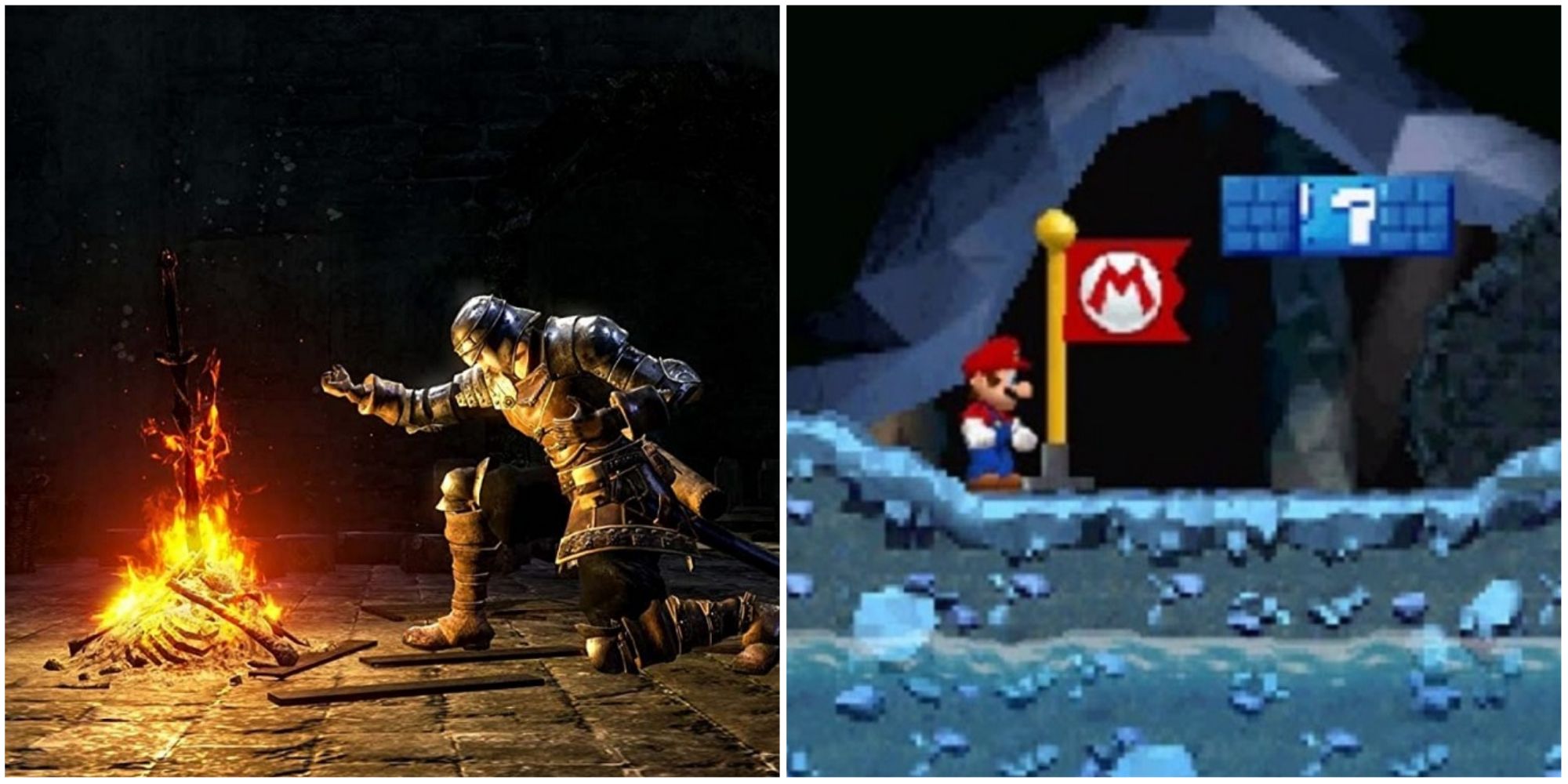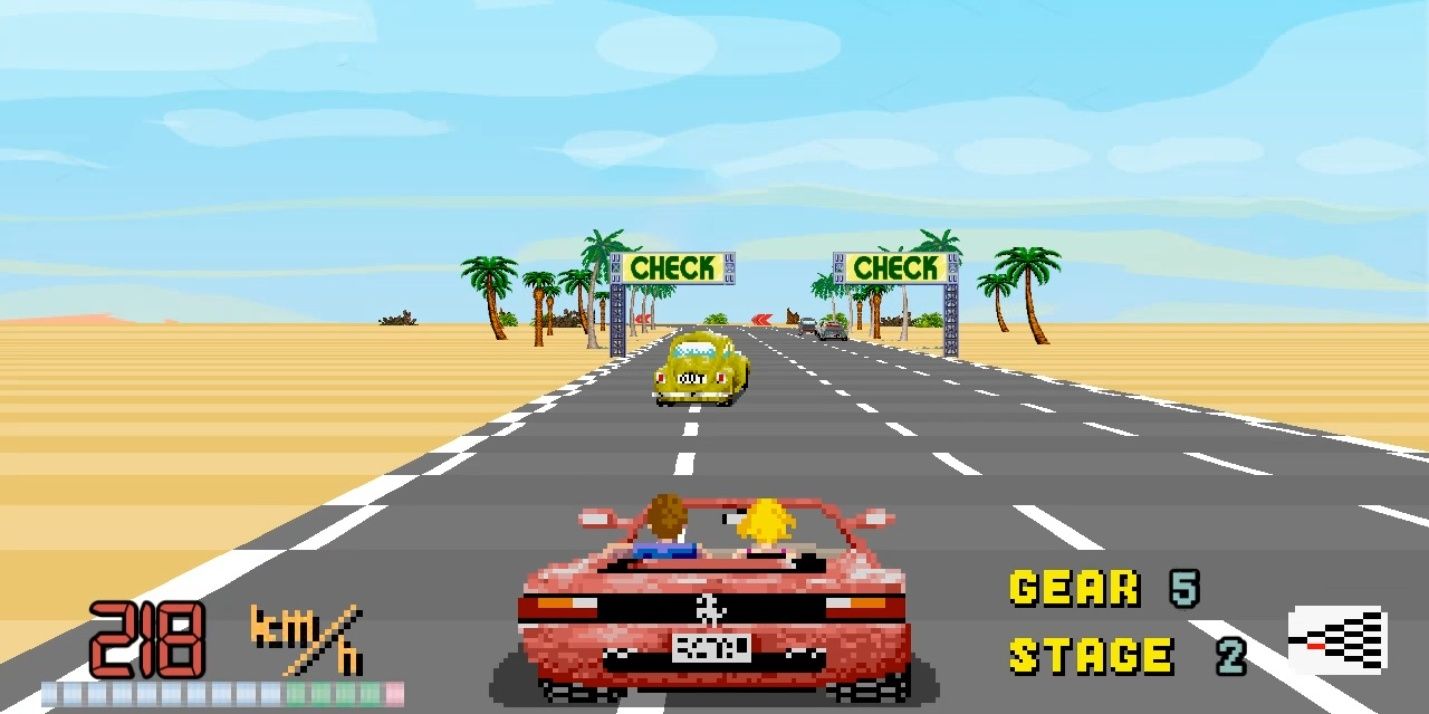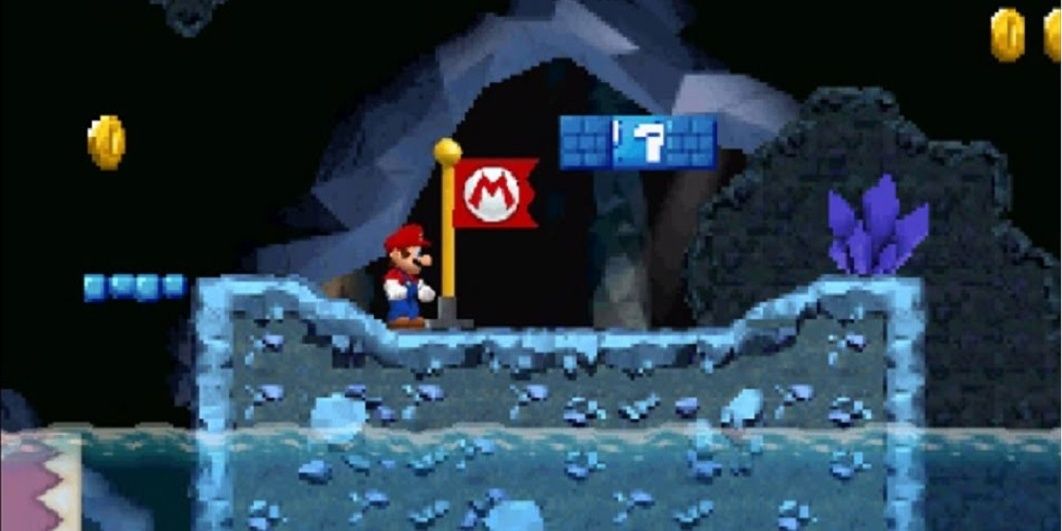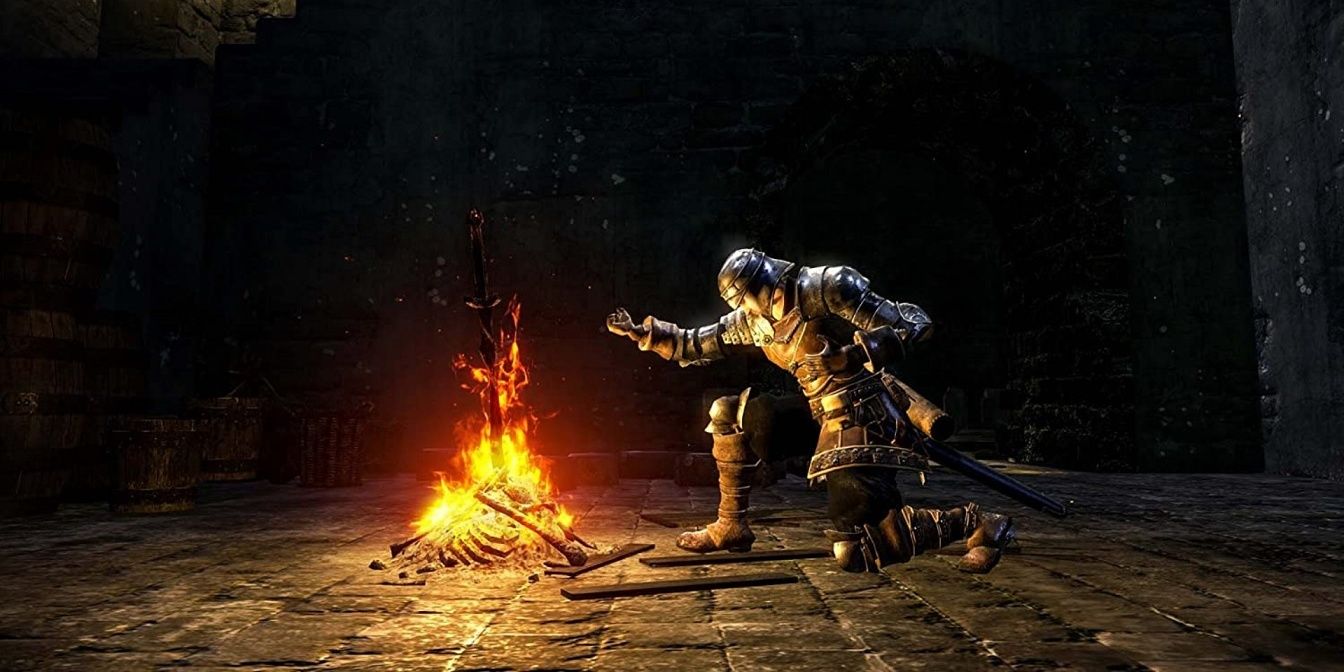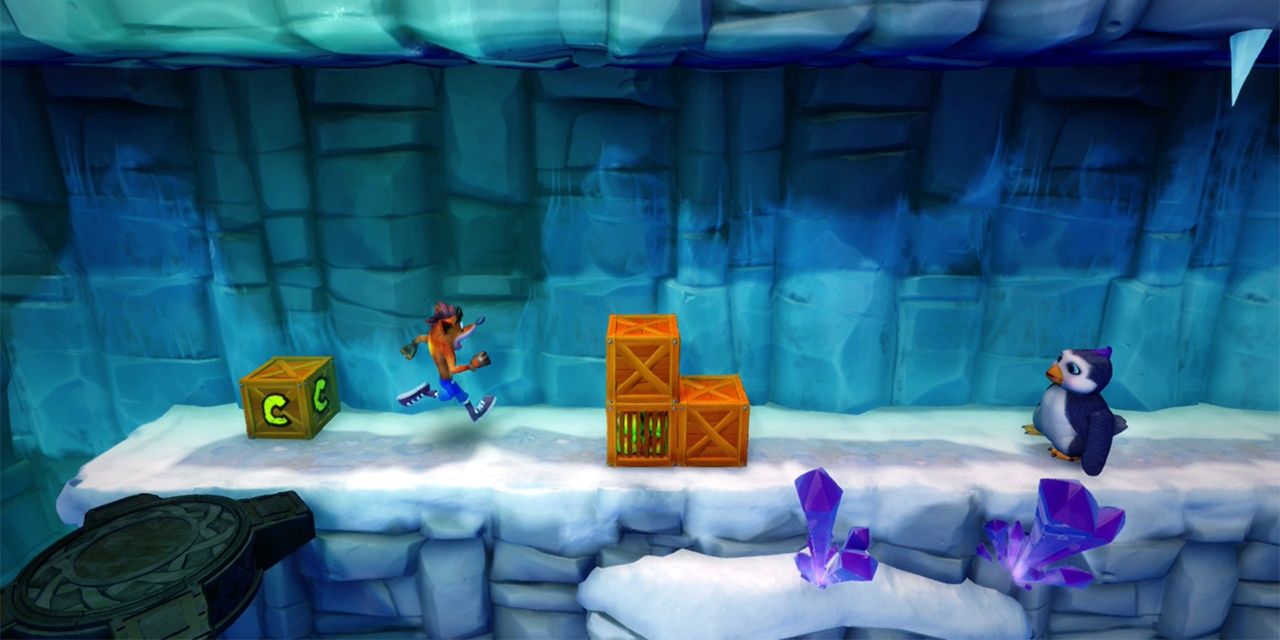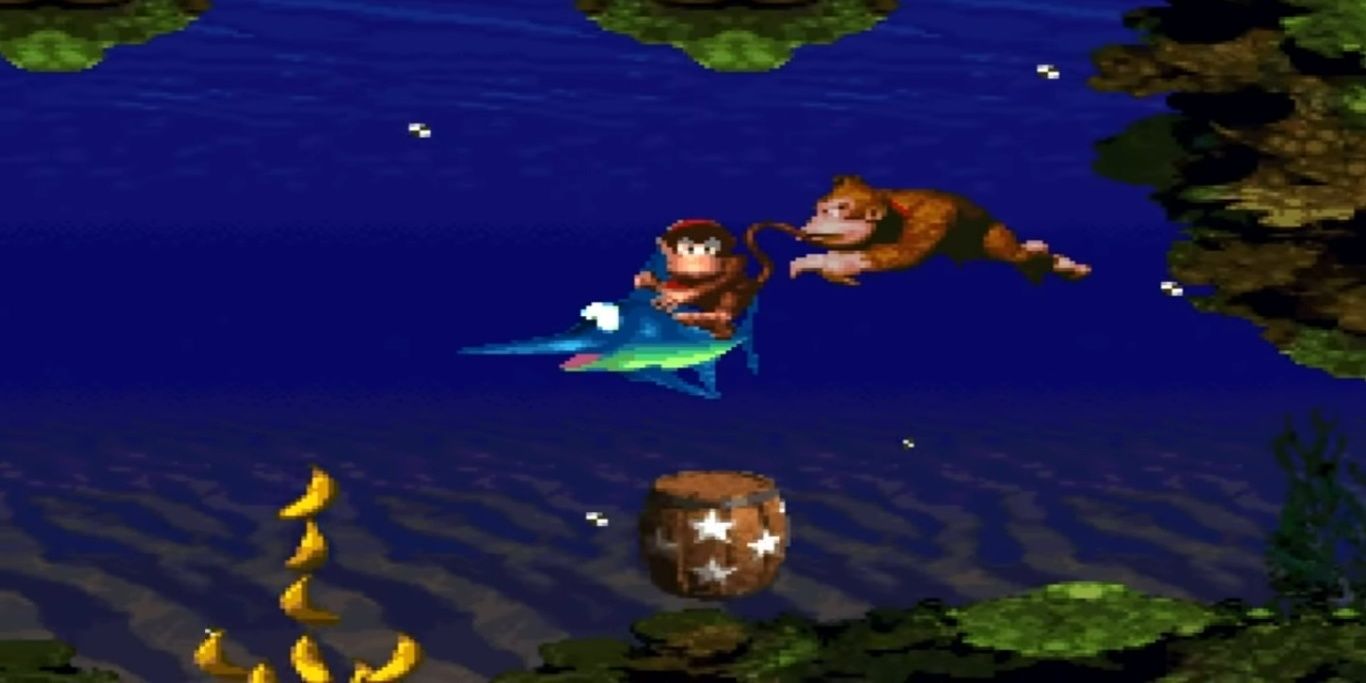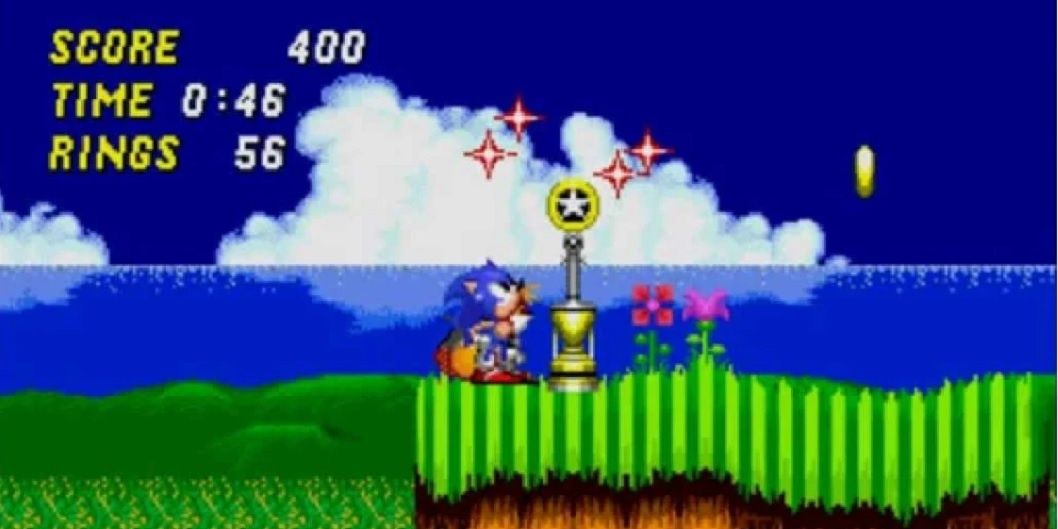As games got bigger in scope, they also got more difficult to beat in one go. They were no longer endless point earners like their arcade-based forebears. It would get disappointing and frustrating to get all the way through a game, reach the final boss, die, and end up way back at the start of the level. Or even worse: the very beginning of the game.
To give players some mercy, developers began to implement checkpoints, where dying in a level would just set them back part of the way. Some of these ended up becoming game features in themselves: markers that the player had to hit to activate in order to avoid getting set back. And eventually, some of these checkpoints became iconic in their own right.
6 Check Points – Outrun
The term ‘checkpoint’ comes from checkpoint racing, where cars have to reach each point and then hit the Finish Line to qualify. So, it’s no surprise that the first game to feature checkpoints was a racing game: 1974's Gran Trak 10. They’re not quite the same as ones in other games, given they don’t let the player resume driving from that point on the track. However, they do provide time bonuses to keep them in the game.
Many racers use these kinds of checkpoints, but the most iconic one has to be Outrun. The joy of finally reaching a checkpoint and starting the next section is a relief in an otherwise testing driving game. The game emphasizes this sense of accomplishment with a happy, crunchy 'Check Point!' sound bite each time the player gets it.
5 Mini-Flags – New Super Mario Bros
Checkpoints evolved once they reached other genres. They became the more familiar space-savers as gamers know them today. The Super Mario games had them, but they tended to be invisible, activating only once the player passed a certain point in the stage. Even when they became features, they would differ with each game. Super Mario World had a tape to pass through. Then Super Mario Land 2: 6 Golden Coins had ringing bells, while Yoshi’s Island went with rings.
It wasn’t until New Super Mario Bros that Mario's checkpoints gained a common design. Since the original Super Mario game ended with a big Flagpole, the checkpoints in this game were Mini-Flags instead. They would feature throughout the New Super series before making the jump to Super Mario Galaxy 2 and Super Mario Odyssey. Still, while everything else in Mario is iconic, these Mini-Flags are just a variant on the classic Flagpole, so they're pretty low on this list.
4 Bonfires – Dark Souls
Dark Souls and its ilk built their fame on being difficult. Players had to master the game's moves, items, and more to avoid getting killed in multiple, nasty ways. Few people have played the games without dying at least once —more often multiple times. Still, the games do provide some respite from the action. Namely, the Bonfires in the main Dark Souls series do a lot for the player.
Bonfire checkpoints can refill the player's health, stamina, and magic, replenish their Estus Flasks, and cure all but one Negative Status effect (sorry, Curse-afflicted players). They can also upgrade their weapons and armor, fix their gear, store items, warp to different parts of the level…oh, and give the player a place to respawn if they die. However, the game will only respawn them at the Bonfire they last rested at, and some can be permanently snuffed out if its fire keeper gets killed. So, don’t take them for granted.
3 Checkpoint Crates – Crash Bandicoot
Rival platformers standardized their checkpoints a decade prior to New Super Mario Bros. Crash Bandicoot was all about a bandicoot crashing into stuff, earning gems and other treats if he crashed every crate in a level. These included the Checkpoint Crates, which keep Crash ahead in the game if he loses a life. Not that they were always good at their job.
The crates in the first Crash Bandicoot game would save Crash’s place in a level, but not the boxes he smashed. The player couldn't go back and re-smash those boxes either, as the game would skip the tally screen. So, players couldn't die at all if they wanted to earn a gem and beat the game 100%. The sequels and its N-Sane Trilogy remake thankfully fixed this issue, saving the smashed box count. Just don't get a Game Over, or it gets nullified.
2 Star Barrels – Donkey Kong Country
Why does Crash Bandicoot break crates? Because Donkey Kong already had dibs on barrels. Nintendo’s great ape has been chucking them around since his 1981 debut. So, when he aged into Cranky Kong, he passed them on to his tie-wearing grandson and his monkey friend Diddy for Donkey Kong Country. The game and its sequels are full of different barrels. Some shoot the Kongs across the level. Others reveal secret passages and bonus stages.
The Star Barrels won't give the bonus extra bananas or an animal buddy, but they can be a lifesaver. If the Kongs smash these floating barrels, and then die later on in the level, they’ll smash out of these wooden kegs as soon as they give it another try. They’ll even save how many K-O-N-G letters the player picks up. They’re not the most original checkpoint design, but they’ll get the job done.
1 Goal Posts – Sonic the Hedgehog
In Crash Bandicoot, the Checkpoint Crates look like every other crate, albeit with a big ‘C’ instead of a ‘?’. Likewise, the Star Barrels are just one of multiple kinds of Barrels in the Donkey Kong series. If any checkpoint had a claim to being iconic, it would have to go to the Blue Blur’s Goal Posts. They’ve been present in nearly every Sonic game for the past 30+ years. The 3D games made them more like racing game posts, complete with a border for Sonic to pass. However, they were more special in the classic games.
They were just ordinary checkpoint markers in the first game. Then, Sonic the Hedgehog 2 changed that by making them the way to reach the Special Stages. Collect 50+ rings, pass one, and jump into the spangly stars to earn a shot at a Chaos Emerald. They didn’t just save the player’s progress; they helped them get Super Sonic and earn the game’s best ending. Sonic 3 & Knuckles toned them down to Bonus Stage portals offering more rings, Shields, and lives. While not as special, this still made them a fun and helpful distraction from the usual jumping and Badnik-bopping.

